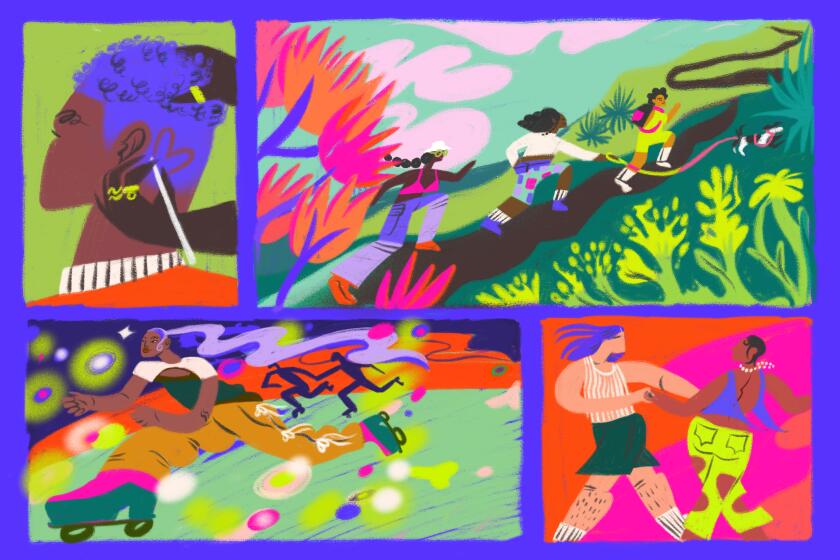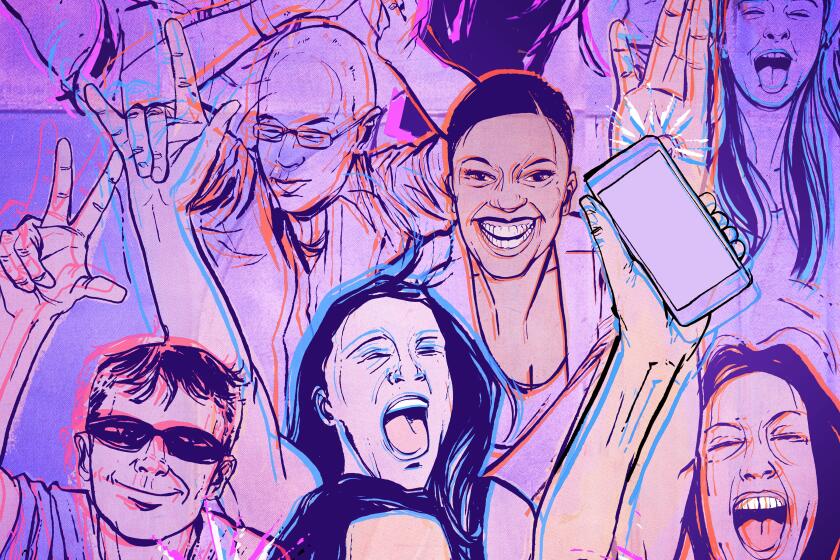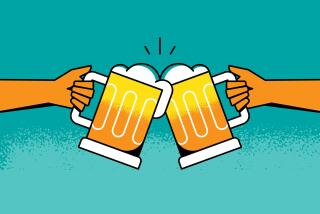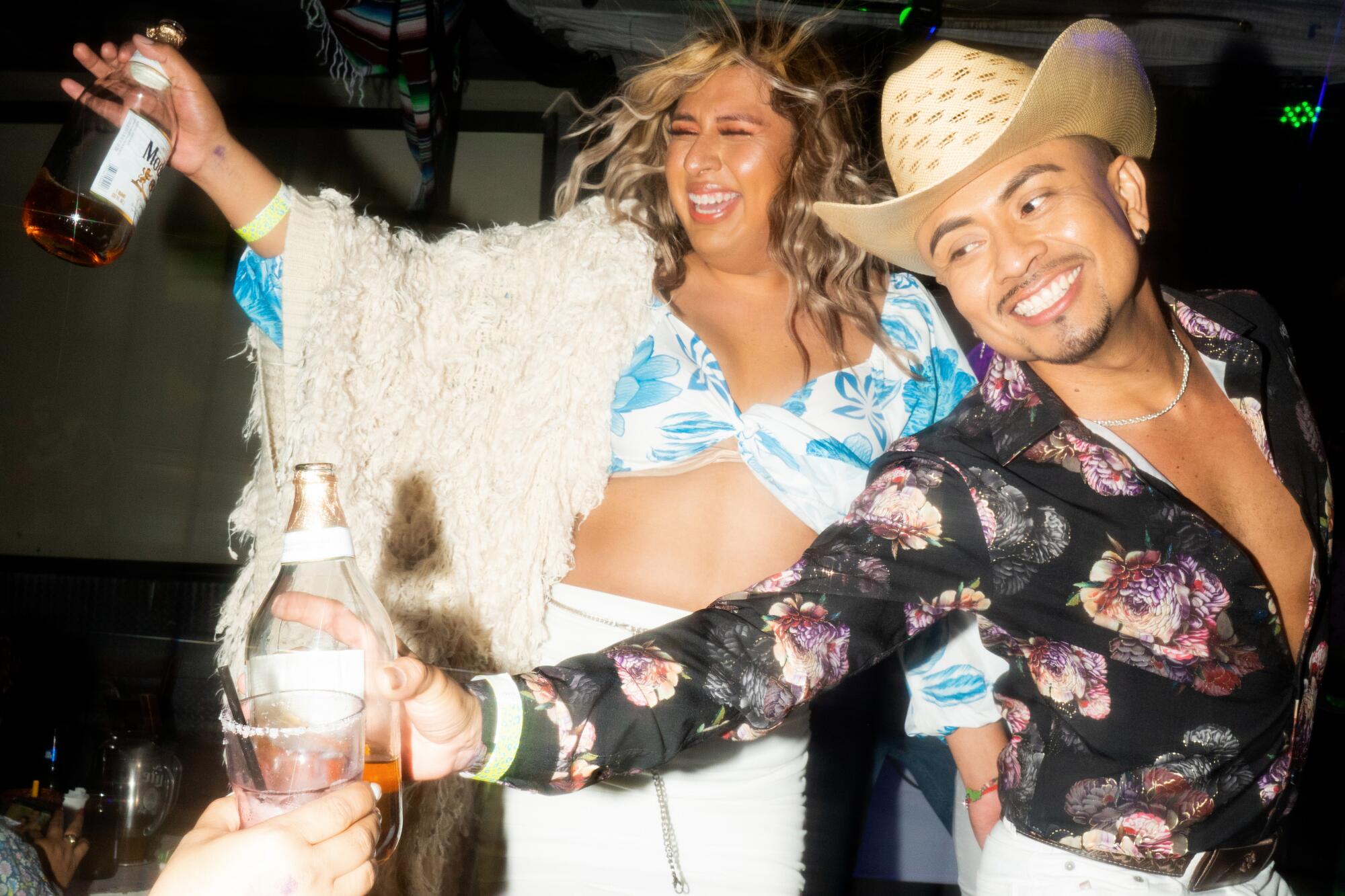
- Share via
A beige tejana sits atop Antonio Rodriguez’s freshly dyed, icy blond, buzzed hair. It’s the final piece to his look.
He’s wearing a silver chain necklace, a slightly unbuttoned, flower-printed shirt and white, slim-fitted pants. A brown leather belt wraps around his waist with a shiny buckle; his black boots gleam from polish.
“I don’t care if you can tell if my style is too masculine or feminine,” says Rodriguez as he adjusts his tejana, getting ready for a night out with friends. “My pants are tight, the boots are pointy. I’m a vaquero of those two identities.”
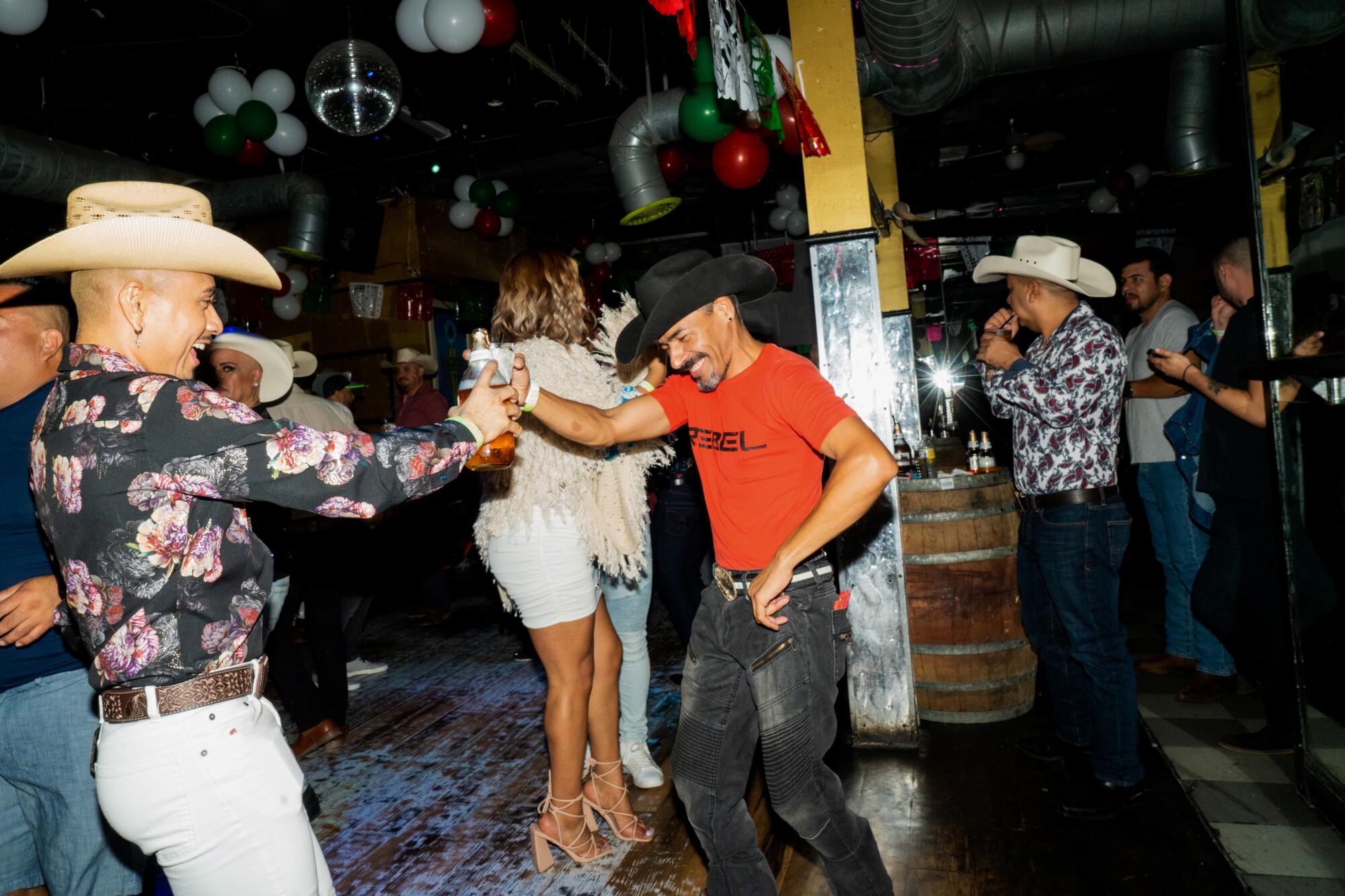
Vaqueros, or cowboys, represent the ideal rough, hard-working man who is synonymous with power and masculinity in Mexican culture. Tejana-wearing men have embraced their so-called paisa subculture in the U.S. despite often being ridiculed for their style by U.S.-born Mexican Americans.
To be a queer vaquero is to be unapologetic about who you are; it’s a radical act. For Rodriguez, it’s more than a look. It’s his lifestyle, one that shows he’s proud of both who he is and where he comes from.
During the week Rodriguez works as a hairstylist and makeup artist, but year-round he is a vaquero. And on Sunday nights, there is one place he goes: Club Tempo.
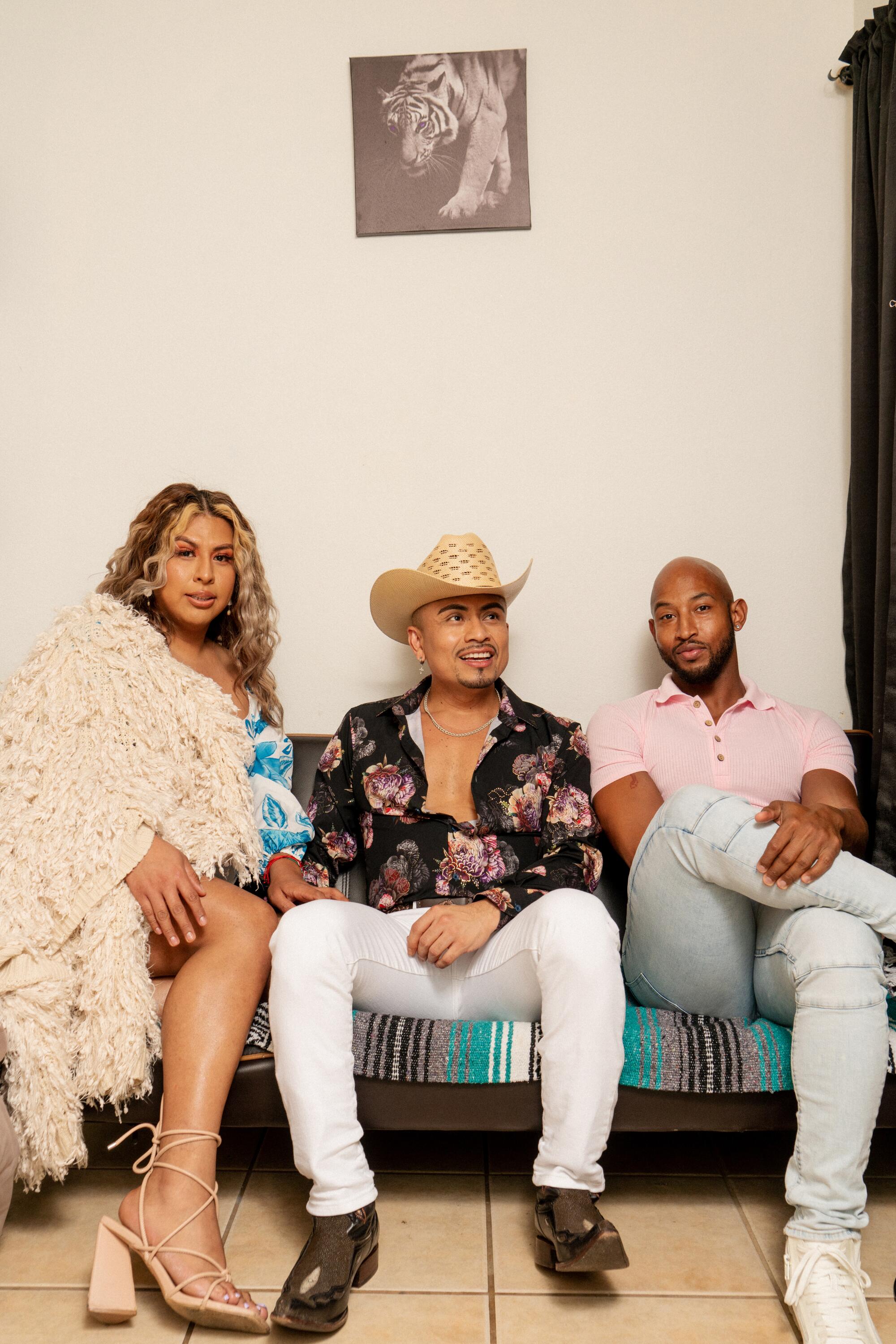
The Hollywood club is one of L.A.’s few remaining Latino gay bars, and the only one that caters to the queer vaquero community. Club Tempo may not have the mainstream recognition of gay clubs in West Hollywood, but its history runs deep. The two-story bar has been around since the early 1990s and serves as a home for a community longing for connection. West Hollywood doesn’t have the cultural outlet that Rodriguez and other queer vaqueros are looking for, and the straight paisa bars typically found in South L.A. or the Eastside are not welcoming, either.
“To be gay and vaquero — there’s a lot of criticism that comes with that, even from our own native country [because of homophobia]. So Tempo is this small place for us to be ourselves because outside of that we are different people,” says Rodriguez as he rolls his white pants over his shin-high boots.
Where to hang out in Los Angeles when you want to meet queer folks but don’t want to roll up to the usual gay bars and clubs.
Originally from the Mexican state of Guerrero, Rodriguez has been going to Club Tempo since he arrived in the U.S. 15 years ago. He’s recently started capturing some of his vaquero outings at the club on TikTok. It’s a way for him to showcase his various tejanas and looks to the world.
Rodriguez takes a final look in the mirror as his friends Dario Clayton and Avery Gutierrez arrive at his South L.A. home. Calibre 50’s “Corrido de Juanito” plays on the TV, a sorrowful song rich with accordion about not being able to return to Mexico but still wearing a tejana and botas in the U.S. Rodriguez and Gutierrez clink their cans of Mike’s Hard Lemonade as Clayton prepares to drive the trio to Hollywood.
It’s a little before 9 p.m. when the group arrives at 5520 Santa Monica Blvd. Club Tempo’s front parking lot is filled with stacks of hay and red, white and green balloons. The trio can hear the live banda music for this tardeada, a social dance that’s traditionally held on Sunday afternoons and lasts until 3 a.m., as they each pay the $13 cover charge and go through security.
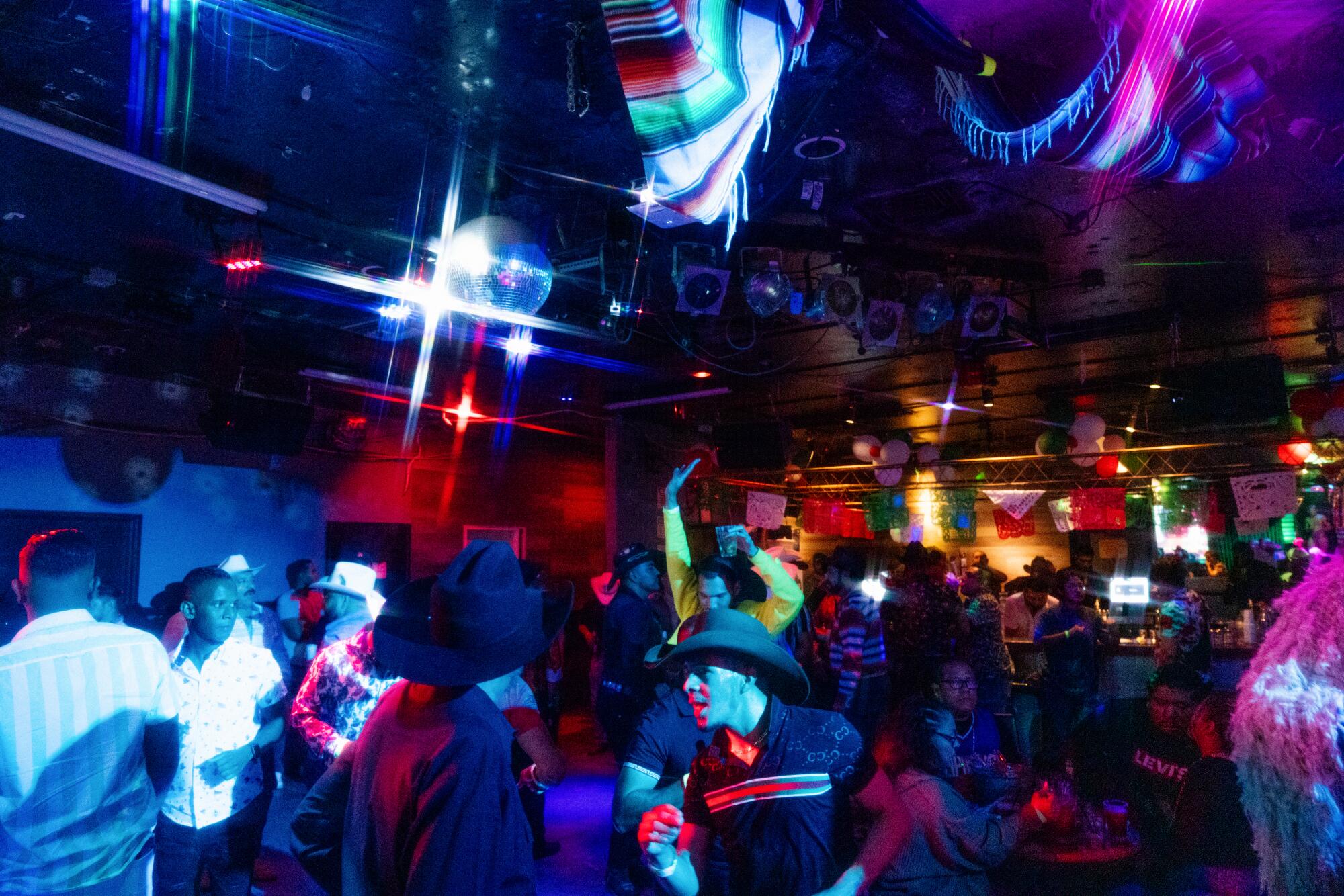
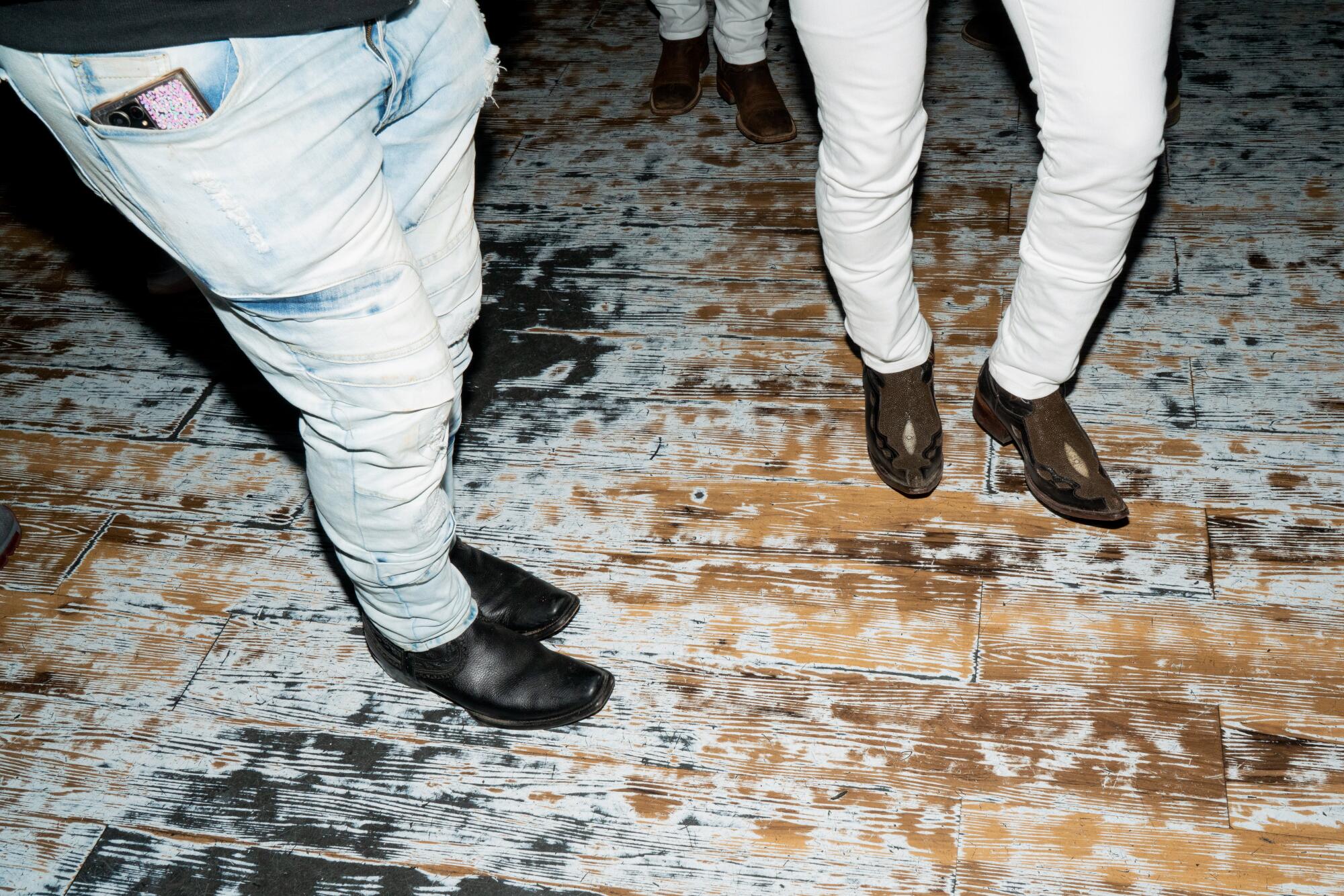
The first stop is the bar. Rodriguez buys his friends a round of tequila shots. The band plays norteños, a genre of Mexican regional music that includes bass guitar, bajo sexto, drums and sometimes saxophone. The frequency and rhythm of accordion fill the intimate dance floor.
All eyes are on a pair of vaqueros locked arm in arm as they kick the floor with their boots in time with the upbeat song “La Yaquesita.” Traditionally, men and women dance to norteño and banda music in pairs. Men take the lead and women follow. However, tradition doesn’t matter at Club Tempo, as men dance with men and anyone can take the lead. The dance floor grows crowded as more guys show up in tejanas.
James Ventura, although not dressed in a tejana or boots, says he feels a personal connection to the club. The 27-year-old, wearing a black button-up and dark pants, grew up just down the street.
He recalls spotting vaqueros lining up outside when he was a kid. Now, as an adult, Club Tempo lets him tap into his queer Mexican identity. Ventura stands by the dance floor as pairs of vaqueros dance close together.
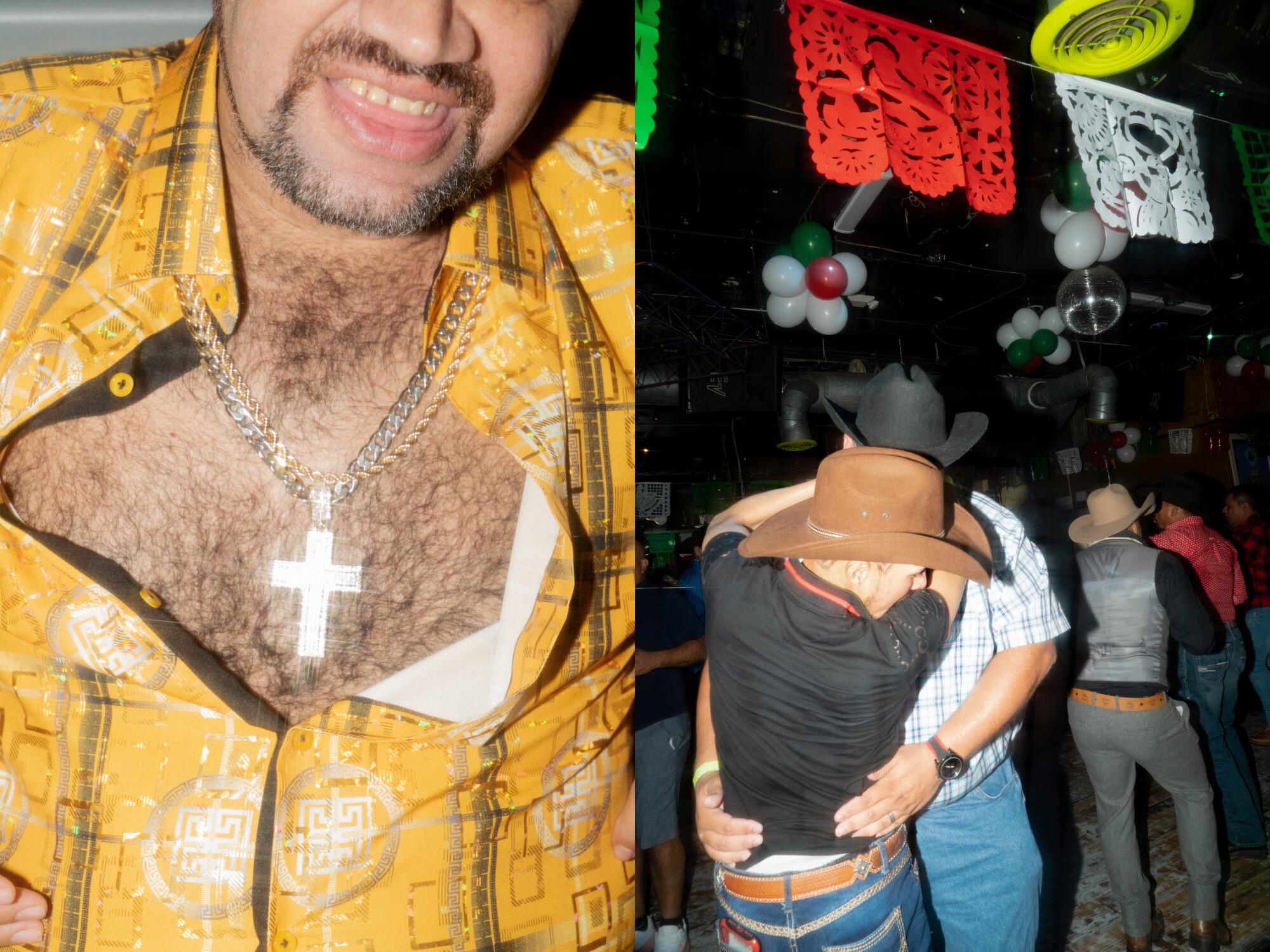
Rodriguez is welcomed by familiar faces as he makes his way upstairs with his friends. “I like to say hi to everybody because I’ve known them for a long time. Every Sunday, it’s the same people,” says Rodriguez as he embraces and chats with fellow vaqueros.
One of them is Luis Mora. Rodriguez and Mora worked together recently as extras on an upcoming short film called “El Paisa.” Written and directed by Daniel Eduvijes Carrera, the film follows an L.A. gay vaquero romance. The two friends were scouted by Carrera at Club Tempo.
Mora is wearing a white tejana with a full face of makeup, including shimmering, smoky eyes and long eyelashes. He wears a sparkling jacket and a silver stud in his left ear; diamonds dangle on his right. He holds a shiny silver clutch as he drinks a Modelo.

“They [other vaqueros] are going to criticize me and question me as to why I look this way. To take off my tejana, shave my beard, that only real men can be vaqueros. But this is my style,” Mora says to Rodriguez as he takes a sip from his beer.
“I love it, amiga,” Rodriguez responds.
It’s now 10:45 p.m. and the group of four make their way to the upstairs dance floor, which plays Latin pop, reggaeton and cumbia. Bar manager Miguel Vallejo hands them Modelos with a cheers. They break from dancing as a drag queen takes the stage, cracking jokes in Spanish. The room fills with laughter.
It’s not long before Rodriguez gestures to his friends to go to the patio. Vaqueros are lounging outside, sitting around and talking. A vendor sells aguas frescas, Takis and other Mexican snacks. As midnight approaches, Rodriguez takes a deep breath of fresh air. He looks around with a subtle smile.
From intimate clubs to picturesque outdoor theaters to state-of-the-art arenas and stadiums, there’s no better place to see live music than SoCal.
“This is the one place I can come to and dance to banda, cumbias or whatever and for one night of the week, my world is the music. I don’t have to change.”
His friends cheers to that with their Modelos and make their way inside to dance once more.
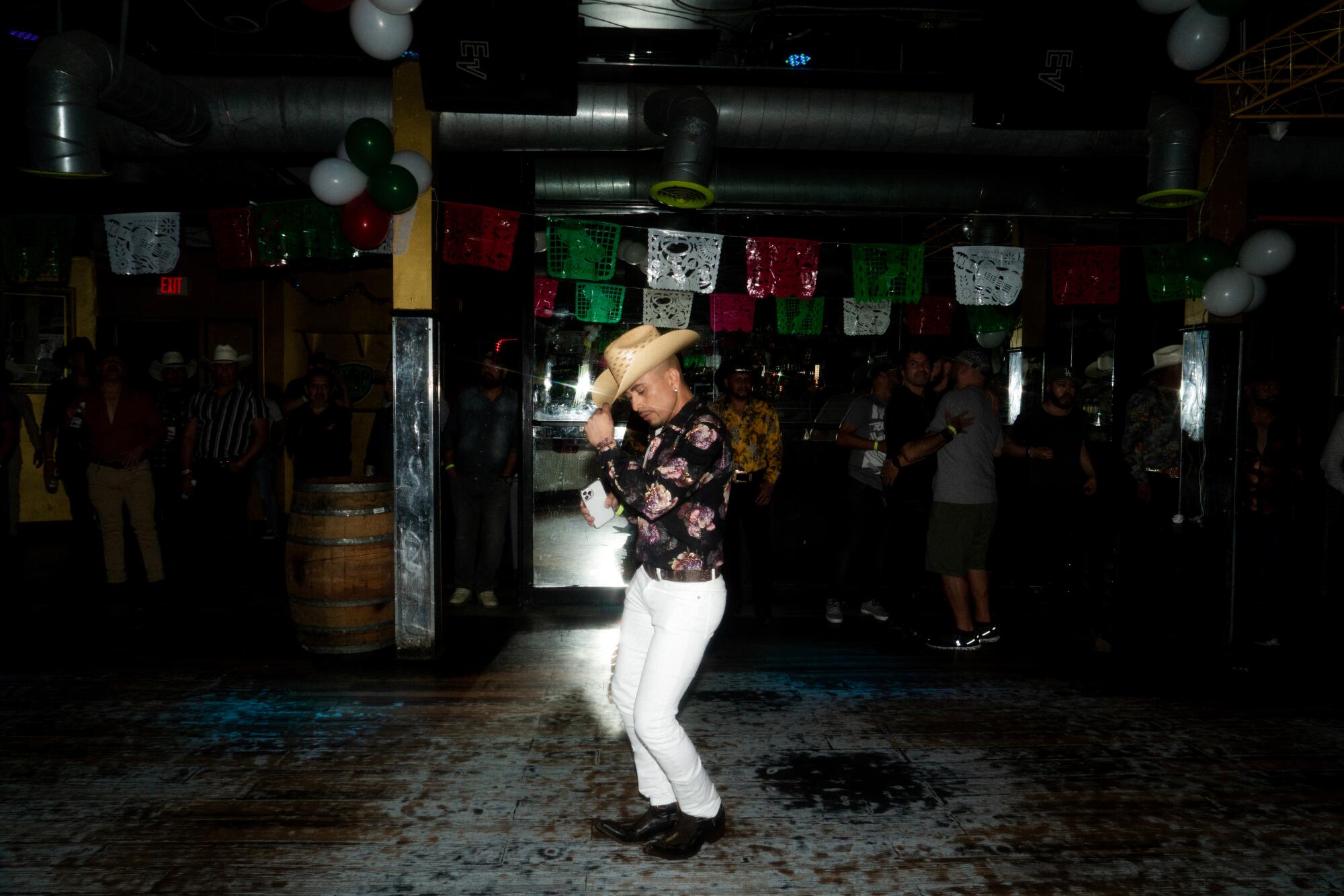
More to Read
Sign up for The Wild
We’ll help you find the best places to hike, bike and run, as well as the perfect silent spots for meditation and yoga.
You may occasionally receive promotional content from the Los Angeles Times.
